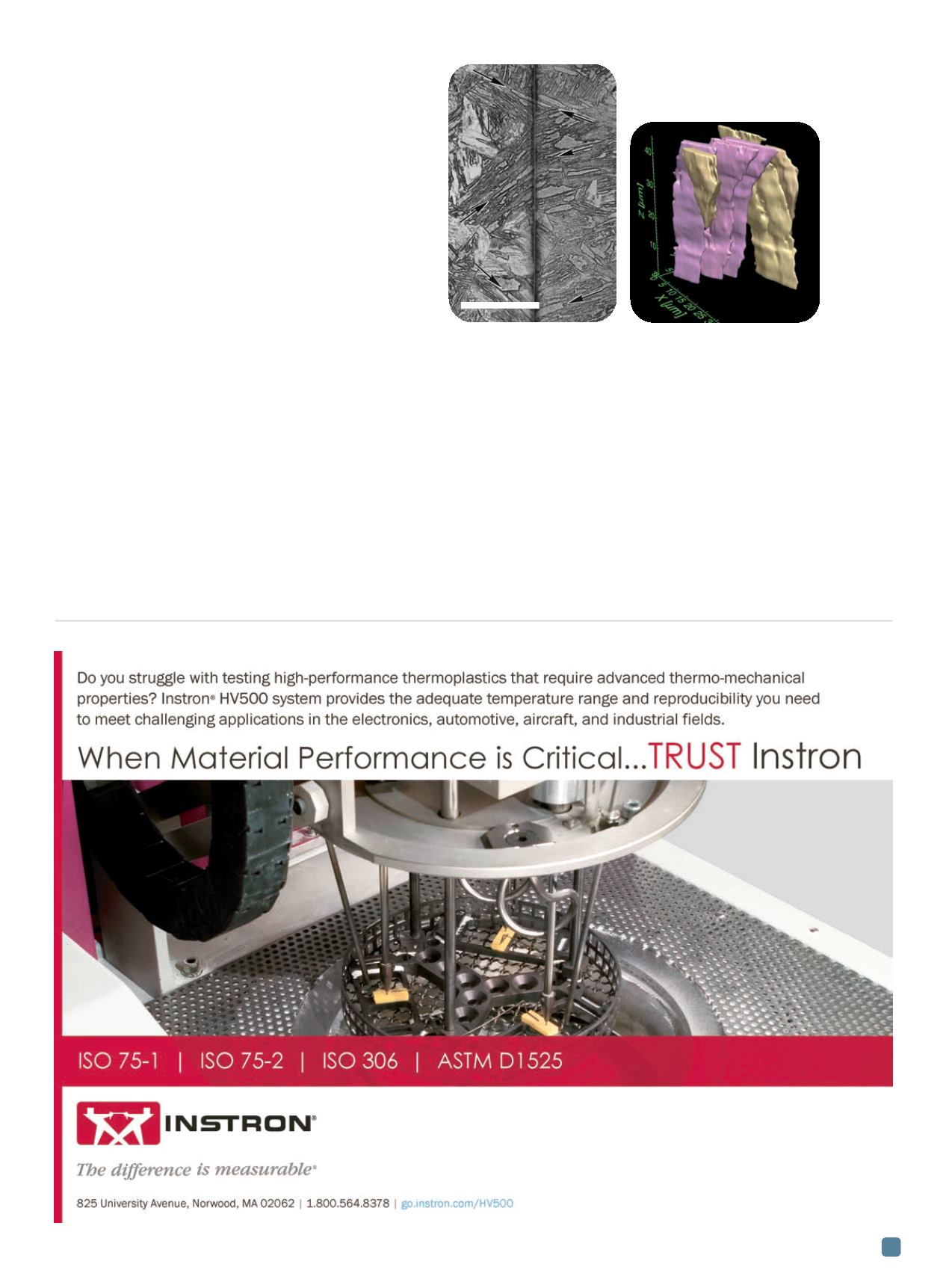

ADVANCED MATERIALS & PROCESSES •
SEPTEMBER 2014
19
3D reconstruction. This reconstruction demonstrated
that all precipitates within the grain interior had a sim-
ilar lath morphology connected to the grain boundary
cementite film. In other words, the morphologies iden-
tified from the 2D analyses as Widmanstatten sideplates,
intragranular Widmanstatten precipitates, and intra-
granular idiomorphs were actually a single precipitate
morphology—a Widmanstatten sideplate. The different
apparent morphologies observed on the 2D surface re-
sulted from sectioning these Widmanstatten precipi-
tates in different orientations.
The 3D reconstruction of the grain boundary cemen-
tite precipitate film exhibits an unexpected characteristic—
holes in the grain boundary films appeared more irregular
than expected from the growth and impingement of allotri-
omorphic precipitates. Etching away the matrix to expose
the cementite grain boundary film demonstrates that grain
boundary precipitates initially exhibit a dendritic morphol-
ogy instead of the classical allotriomorphic morphology re-
ported from 2D analyses. Further precipitation causes
impingement of the dendrite arms to form the observed
grain boundary film. Random 2D cross-sections of the
dendritic structure reveal a row of dendrite arm cross-sec-
tions, appearing to be isolated allotriomorphs at the grain
boundary. Only 3D analysis allows the correct dendritic
morphology to be identified.
Coarse martensite case study
Another example of the importance of 3D analysis for ac-
curate determination of microstructural features involves a
coarse martensitic component observed in low carbon
steels
[8]
. This coarse martensite, called
coalesced bainite
by
some researchers
[9]
, typically exhibits a flat interface at one
end and either a rough face or a tapered morphology at the
other. Analysis of coarse martensite on two perpendicular
faces of the sample, as in Fig. 4a, demonstrate that individ-
ual precipitates can exhibit large dimensions in those two di-
rections, indicating a plate morphology. In addition, the
Fig. 4 —
Optical micrographs from two perpendicular surfaces
showing typical appearance of the coarse martensite on each
face and selected martensite constituents with large
dimensions on both faces (a), and 3D reconstruction of two
coarse martensite orientations (b, indicated by color).
40 µm
(a) (b)


















